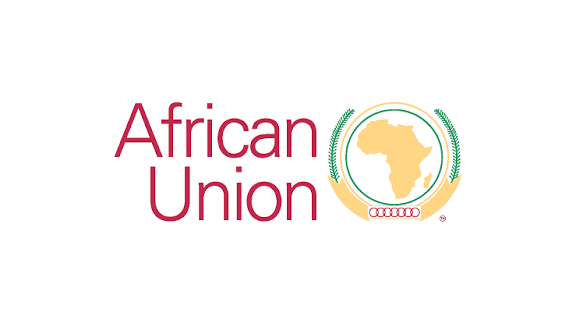

Israel has unleashed its most intense military strikes on Gaza since a ceasefire ended, killing over 330 people, according to the Hamas-run health ministry in the territory. The escalation comes as Israeli Prime Minister Benjamin Netanyahu vowed to continue fighting until all hostages held by Hamas are released and the militant group is crushed.
The strikes, described as part of a military strategy dubbed the “Hell Plan,” mark a significant escalation in the conflict, which has already claimed thousands of lives. Hamas accused Netanyahu of deciding to “resume war” after an impasse in truce negotiations, warning that the return to fighting could be a “death sentence” for hostages still alive in Gaza.
Israel’s Justification for Escalation
Netanyahu’s office stated that the operation was ordered after “Hamas’s repeated refusal to release our hostages, as well as its rejection of all of the proposals it has received from US Presidential Envoy Steve Witkoff and from the mediators.” The Israeli government emphasized its commitment to achieving its war aims, including the release of hostages and the dismantling of Hamas.
“We will not stop fighting as long as the hostages are not returned home and all our war aims are not achieved,” said Israeli Defense Minister Israel Katz.
Hamas’s Response and Mediation Efforts
Hamas condemned the escalation, stating that Netanyahu’s decision to resume fighting was a “decision to sacrifice the occupation’s prisoners and impose a death sentence on them.” The group claimed it had adhered to the ceasefire and was working with mediators to halt the strikes.
A Hamas official said the movement was “working with mediators” to stop the violence, adding that the group had “adhered to the ceasefire.” However, Israel dismissed these claims, accusing Hamas of rejecting all proposals for a peaceful resolution.
Humanitarian Crisis in Gaza
The strikes have caused widespread devastation in Gaza, with the health ministry reporting that most of the 330 deaths were women and children. Hundreds more were wounded, many in critical condition. Hospitals in Gaza, already overwhelmed, struggled to cope with the influx of casualties.
In Khan Yunis, in the southern Gaza Strip, AFP footage showed people rushing stretchers with wounded children and adults to Nasser Hospital. Bodies covered in white sheets were also brought to the hospital’s mortuary.
Mohammed Jarghoun, a 36-year-old resident of Khan Yunis, described the horror of the strikes: “I thought they were dreams and nightmares, but I saw a fire in my relatives’ house. More than 20 martyrs and wounded, most of them children and women.”
Ramez Alammarin, 25, recounted carrying children to a hospital southeast of Gaza City, saying, “They unleashed the fire of hell again on Gaza. Bodies and limbs are on the ground, and the wounded cannot find any doctor to treat them.”
International Reactions and Mediation Efforts
The White House confirmed that Israel had consulted the Trump administration before launching the strikes. US envoy Steve Witkoff had proposed a “bridge proposal” to secure the release of five living hostages, including Israeli-American Edan Alexander, in exchange for freeing a “substantial amount of Palestinian prisoners” from Israeli jails. However, Hamas rejected the proposal, leading to a deadlock in negotiations.
White House Press Secretary Karoline Leavitt reiterated President Trump’s stance, warning that “all hell will break loose” for those who seek to terrorize Israel or the United States.
Meanwhile, Yemen’s Huthis, part of Iran’s “axis of resistance” against Israel and the US, vowed to escalate attacks in the Red Sea in solidarity with Hamas.
Families of Hostages Plead for Action
Families of Israeli hostages in Gaza pleaded with Netanyahu to “stop the killing and disappearance” of their loved ones. They called for a protest in front of the prime minister’s residence, demanding urgent action to secure the release of the remaining captives.
Of the 251 hostages seized during Hamas’s October 7, 2023, attack on Israel, 58 are still held in Gaza, including 34 whom the Israeli military says are dead.
Deadlock in Truce Negotiations
The initial phase of the ceasefire, brokered by Qatar, Egypt, and the United States, took effect on January 19, 2025, halting more than 15 months of fighting. However, the two sides have been unable to agree on the next steps.
Hamas has consistently demanded negotiations for the second phase of the truce, which would involve the release of remaining hostages, the withdrawal of Israeli forces from Gaza, and the establishment of a lasting ceasefire. Israel, however, insists on extending the first phase until mid-April and demands the total demilitarization of Gaza and the removal of Hamas.
Global Warnings Against Escalation
Both Russia and China have warned against further escalation in Gaza, urging all parties to prioritize diplomacy and avoid actions that could deepen the humanitarian crisis.
As the conflict intensifies, the international community faces mounting pressure to broker a lasting resolution and prevent further loss of life in the region.



















